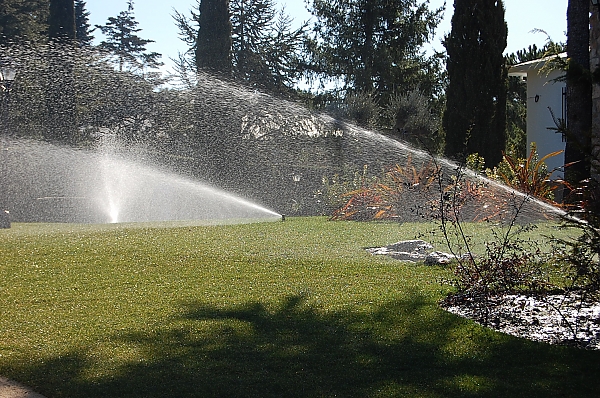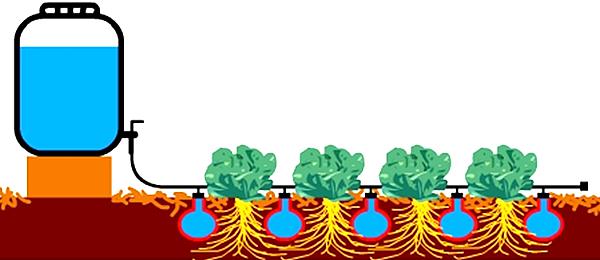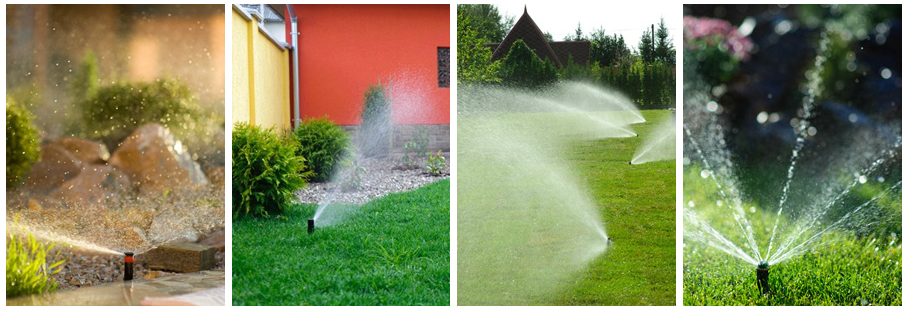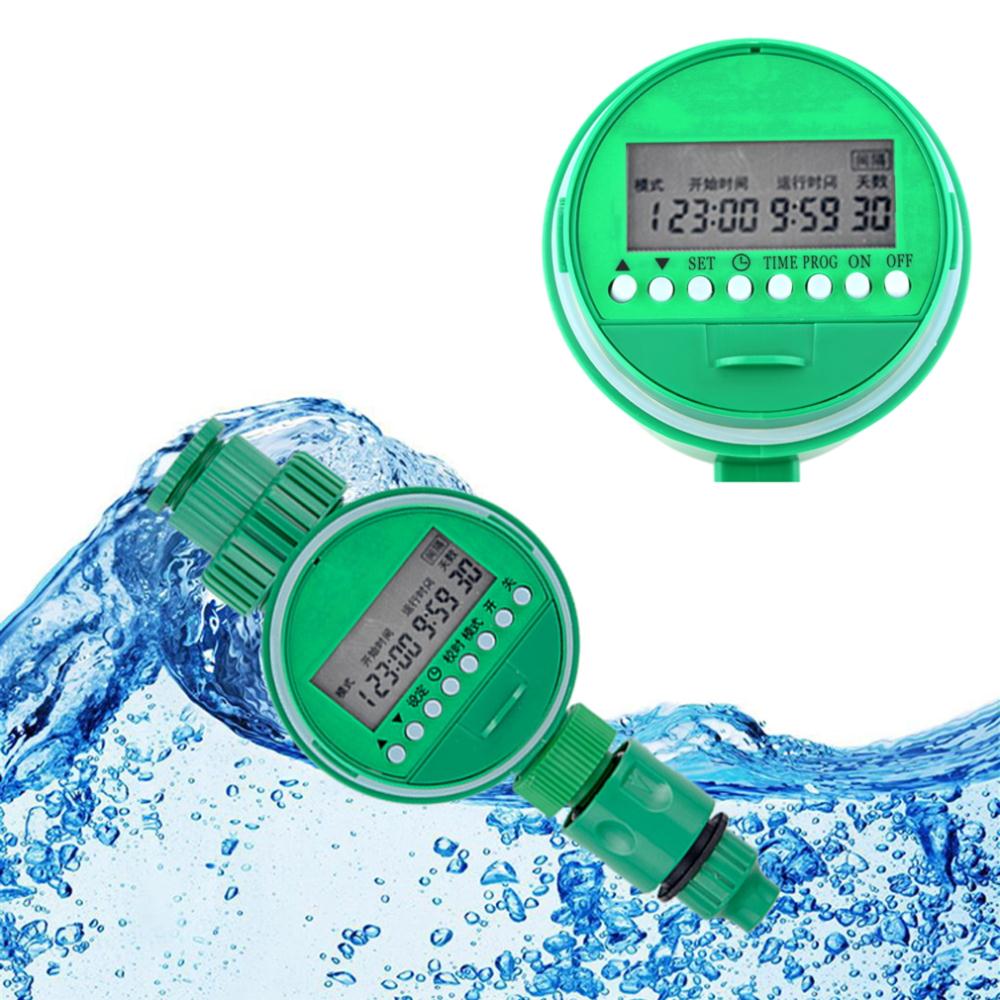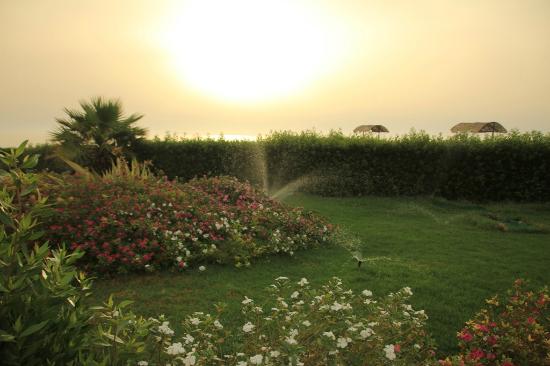How watering of the garden is carried out: basic principles and features of the process
Content
Watering options
Remember that watering is always done with drinking water, but not always with cold water. Some people use watering from a septic tank, as here the water will be more purified. Here, water is passed through a septic tank from a well, well, river, etc. Watering the garden with water can be done in several ways.
There are the following options for irrigating gardens and vegetable gardens:
- sprinkling;
- overlap along the formed stripes and checks;
- overlapping along the formed furrows;
- surface drip irrigation;
- drip subsurface irrigation.
These options have both advantages and disadvantages. Overflow options are the simplest and easiest, but they worsen the structure of the soil when the land is flooded. Also an easy method of watering with water is sprinkler irrigation. But it leads to the development of fungi. At the same time, soil watering saves time and water, but it is more costly.
As equipment here you can use wells, boreholes, sprinklers, systems from a septic tank and other tools.
Experts recommend using several methods at once for maximum efficiency and saving water and time.
Video "Wick method of watering the garden"
Through the wick, moisture spontaneously, slowly flows under the root system, which does not require any inspection and maintenance throughout the week. The root system is easily fed.
Organization methods
How many methods of irrigation of vegetable gardens and orchards exist today is hard to imagine. Therefore, in our article, only those methods that are used most often at this point in time will be indicated. It should be remembered that the choice of the method of irrigation with cold and drinking water depends on several factors:
- type of plant (only then it is unambiguously clear whether they can be watered with cold or only warm drinking water);
- soil composition;
- climatic conditions;
- availability of water. The presence near a river, a well or a well, from where you can organize a system from a septic tank or special equipment and devices;
- financial capabilities of a person;
- how much to water.
There are the following methods of irrigation with water:
- irrigation. Ideal for watering shrubs and trees that need a lot of water. This method is not for the lazy, as holes should be dug around the plants. Water is poured into them manually (for example, taken from a well), although it is good to use wells (you can connect a sprinkler with a hose). The use of a sprinkler is not always effective here. Only drinking water is used. It is applied after the end of the growing season;
- furrow method. It is used if the plot has a horizontal slope. Again, this method is not for the lazy, as it requires complex calculations. Here you need to take into account the composition of the soil and the amount of water that will be used for irrigation. With heavy soils, the width of the furrows will be about 80-90 cm, and with light soils - 0.5 m. The disadvantage of this method is the high consumption of drinking water, as well as the difficulty of doing everything with your own hands.
- drip method. It is considered the best solution.It can be used on any type of site. A special device allows you to use water very economically. Wells, wells, etc .; can be used as a source of drinking water;
- sprinkling. In this case, a hose with multiple holes is used. Fluid is supplied through this equipment under pressure. The pressure that the sprinkler gives can be adjusted depending on your needs. The result is a long sprinkler. In this case, the sprinkler is laid into the ground. In addition, the sprinkler can be placed on special tripods. Septic tanks are not used here, and drinking water can be raised from the well. Nowadays, this is a fairly common method of watering.
In addition, another unusual way of watering plants with drinking water is the wick method. Anyone can make such an installation. Such an installation has only one drawback - the inability to control the degree of soil moisture.
For lazy people, the pump method is suitable. This is a very easy to implement method. Thanks to the pump, you can significantly save time when watering large areas with drinking water. The only hitch here can be considered the choice of the type of pump.
By design, pumps are of the following types:
- drainage;
- superficial;
- submersible. This group is divided into borehole (suitable for a well) and well (respectively for a well).
Separately, it should be noted that a septic tank is used when watering young plants and is suitable for many of the methods described above.
Another fairly popular method is watering with drinking water from an automatic system. The advantage of such a system is the complete automatism of the process of watering plants of a vegetable garden or garden with drinking water. For lazy gardeners, this is the very thing. Wells, wells, etc. can be a source of water. It is worth noting that such a system is quite difficult to implement with your own hands.
How to do it yourself
Nowadays, many people prefer to make a drinking water irrigation system for their site with their own hands. Consider the general points, the basic steps in order to do it yourself:
- preparation for work. At this stage, it is necessary to determine the type of irrigation system, the source of water (well, wells, use of a septic tank, etc.), estimate the area of irrigation;
- then draw up a plan for placing the system on the land;
- buy all the necessary materials and tools that are needed in order to make the selected type of irrigation system;
- during the construction of the system, all joints of its elements must be sealed with a sealant in order to exclude possible leaks;
- system pipes / hoses can be placed on special supports, buried in the ground, and also left on the soil surface;
- To prevent quick clogging of hoses or pipes, special filters should be used in the system.
At the same time, if you want to make an automatic irrigation system, you will need to purchase special electronic controllers that run on autonomous batteries. How much they cost depends on the region of the country and the type of controller.
Each type of irrigation system has its own characteristics and disadvantages. Study in detail all their advantages and choose the most suitable method for your site.
Basic principles of garden irrigation
The principles of garden irrigation include the following points:
- watering is necessary depending on the type of plant;
- it is better to irrigate less frequently, but more abundantly. Remember that frequent watering will bring more problems than benefits;
- more water should be poured under fruit trees and bushes;
- watering is carried out only with settled drinking liquid;
- the best time to water is early morning or evening.
Irrigation of vegetable gardens and orchards is a necessary part of proper plant maintenance.By choosing the most optimal irrigation method, you will provide your plot with the necessary moisture level and get an excellent and very tasty harvest at the output.
Video "How to arrange watering"
Rfr reduce the amount of effort, watch the video.


